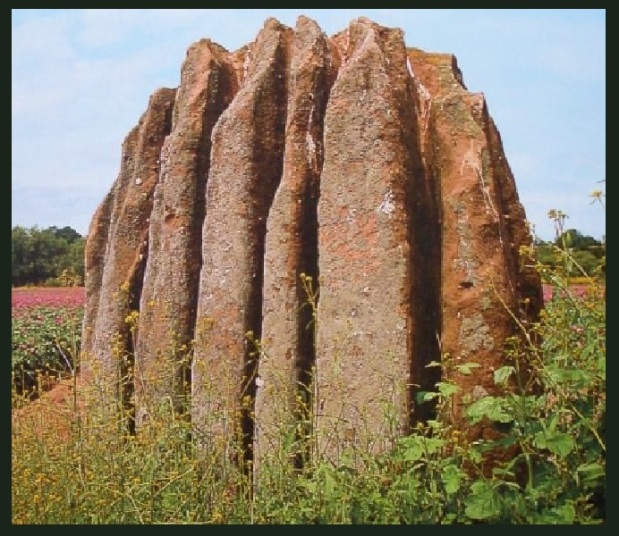(Beaker Folk: Late Neolithic–Early Bronze Age people living about 4,500 years ago in the temperate zones of Europe. – Encyclopædia Britannica)
The New Stone Age people were succeeded by the “Beaker” folk, so called from a highly distinctive type of pot which was used among them. These people have left very impressive memorials in the shape of stone monuments of large size, from single standing stones called “menhirs” to elaborate stone circles. There are no stone circles recorded in Gloucestershire. Although there are several just across its borders, but in the Dean we still can see the Staunton “Long Stone” at the side of the road between Coleford and Staunton, and the “Queen Stone” at Huntsham. Until fairly recently there were two others, “Long John” at Close Turf, St Briavels, which was destroyed in recent years, and another at Shortstanding, which possibly is the origin of the name of the place if, as some think, it comes from “Short Stone Dun”.
Forest Story by R. J. Mansfield (published in 1964 by the author)


